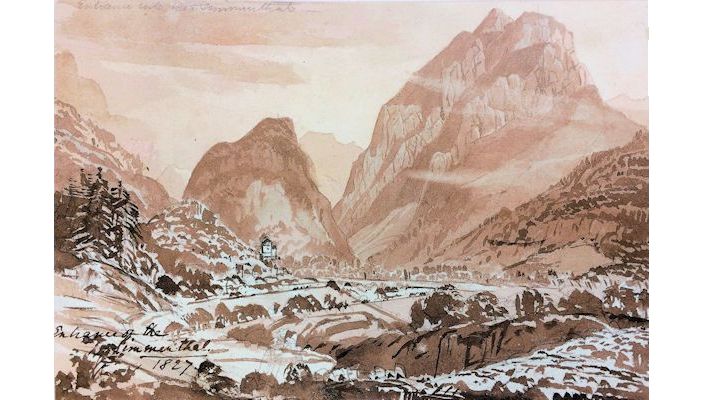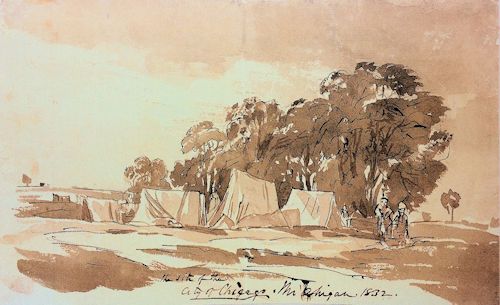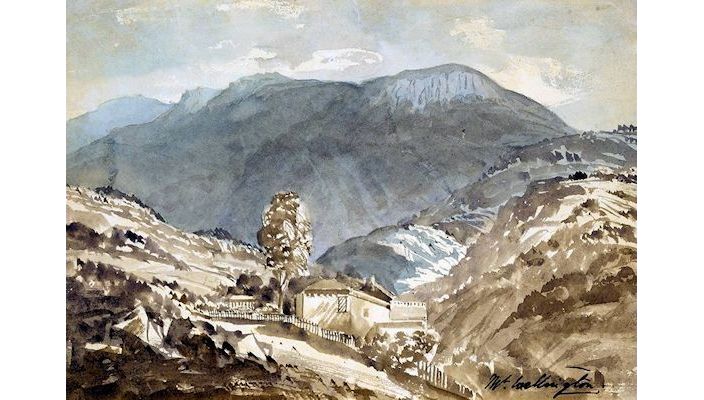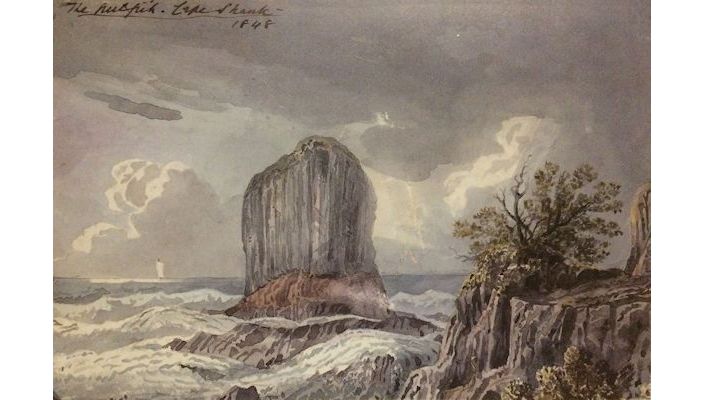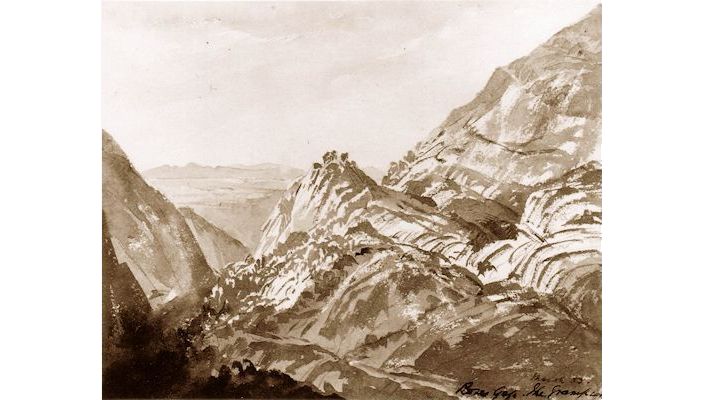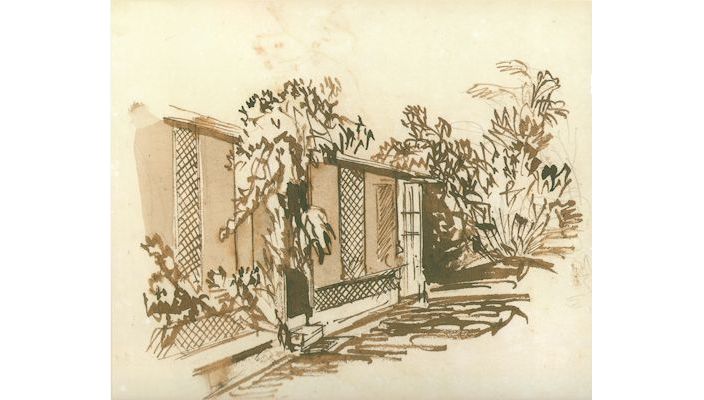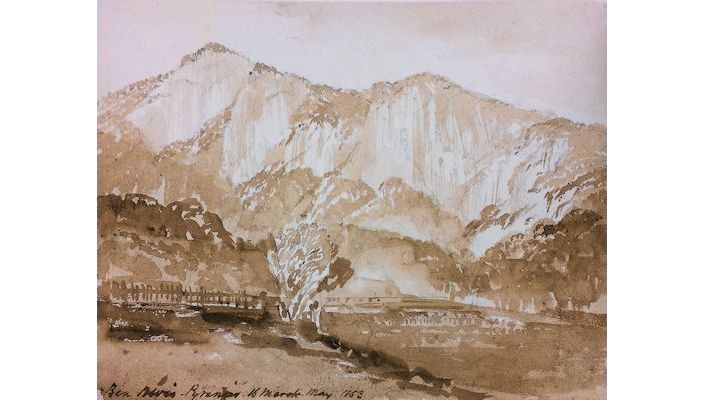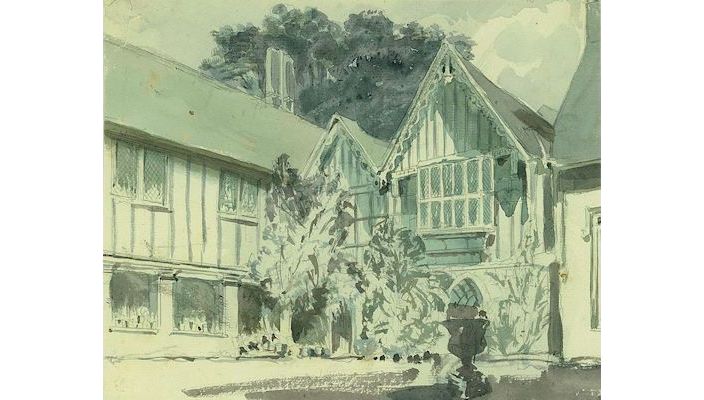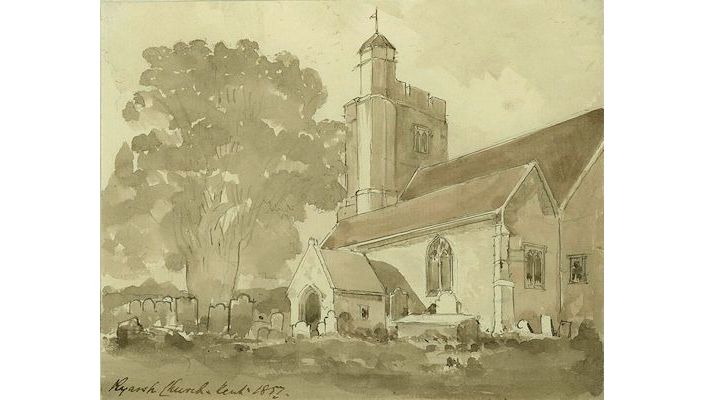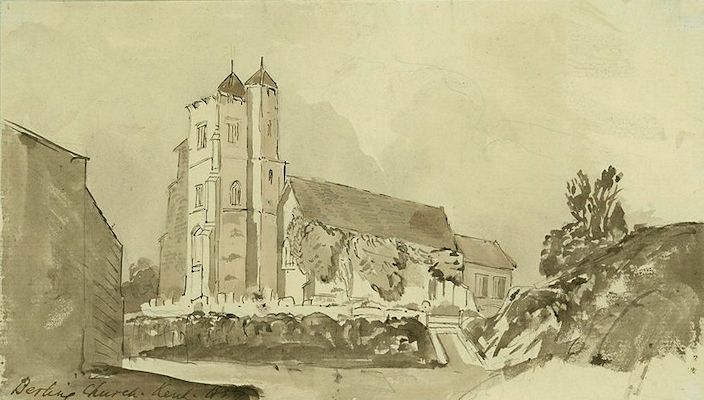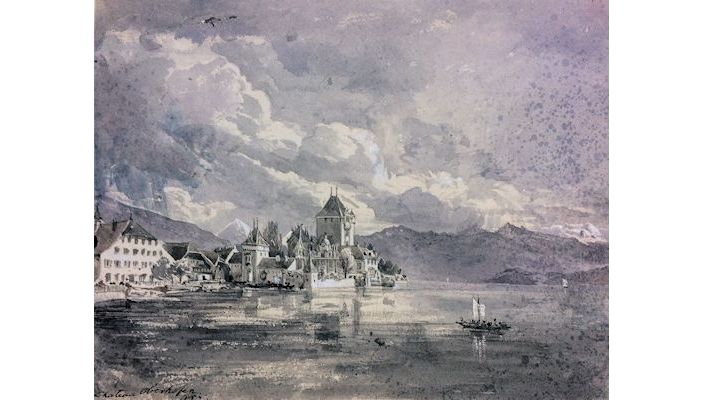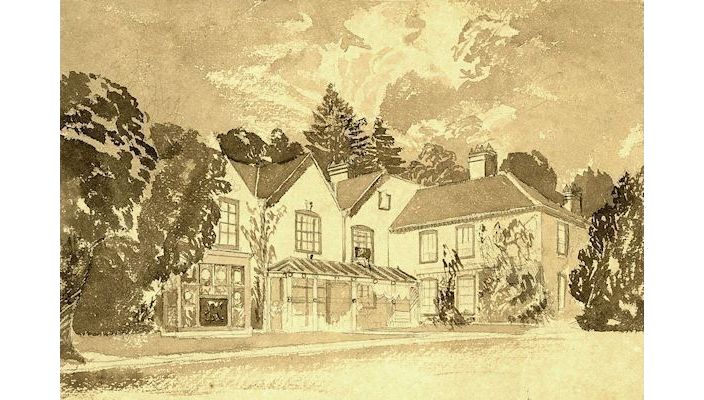Pictures Collection, State Library Victoria
La Trobe as an artist was virtually unrecognised until the publication in 1999 by State Library Victoria, in association with Tarcoola Press and the National Trust of Australia (Victoria), of all his known extant sketches and watercolours in the volume Charles Joseph La Trobe: Landscapes and Sketches (1).
Before his arrival in Australia in 1839, La Trobe had travelled extensively, recording for his own pleasure and as examples of the wonderment of creation the scenery he encountered. No doubt, he began drawing and painting as a student at Fulneck School in Yorkshire, but none of his early efforts has been located.
Fortunately, however, 437 of his sketches and paintings still exist. State Library Victoria is custodian of seven folios of the art of La Trobe. Of these, four folios comprising 277 works – Switzerland-Italy, North America, Mexico and Port Phillip – belong to the National Trust of Australia (Victoria) which placed them with the Library on long-term loan in 1976 for safe keeping Link. These had been donated to the Trust in 1960 by Captain Charles La Trobe and Mrs. Victoria La Trobe Shea-Simonds, the children of Charles Albert La Trobe, the only son of Charles Joseph.
The remaining 160 images in three folios – Home [England], Tahiti and Tasmania – are held in trust for the people of Victoria at the State Library Link. Of these, some pictures were presented to the Library in 1934 by the Baronne de Blonay, daughter of Agnes La Trobe, Charles Joseph’s eldest daughter, together with manuscripts and correspondence relating to her grandfather. The bulk of these three folios, however, was acquired by the Library in 1992 from an antiquarian dealer in London as part of the collection known as the ‘La Trobe Archive’ (2).
Due to the fact that La Trobe sketched as he travelled, with little time available to finish his works, many of his pictures are incomplete. Mostly, they are pencil sketches overlaid with a sepia wash. There are, though, a number of completed paintings which demonstrate how accomplished La Trobe was as an artist. In size, the majority of the works are postcard-size, while some of the more detailed are approximately twice that dimension.
The value of La Trobe’s impressions of the landscape he saw lies in the fact that he recorded scenes very early in the European history of the places he visited. Examples of this phenomenon are his view of the site of the city of Chicago in 1832 as a tent encampment, and the church at Port Arthur in Tasmania, complete with the roof which was destroyed by fire a year after his visit in 1847. In addition, La Trobe’s views of Port Phillip were some of the earliest executed after the arrival of European colonists in the southern part of the Australian continent.
Not only do La Trobe’s sketches and watercolours document the colonising spirit of the first half of the nineteenth century, but they show the contribution made to art and history in many parts of the rambler’s world by the ‘sketcher of no mean pretensions’, Charles Joseph La Trobe (3).
(1) Charles Joseph La Trobe: Landscapes and Sketches, introduced by Dianne Reilly, notes by Victoria Hammond,
Melbourne: State Library of Victoria, in association with Tarcoola Press and National Trust of Australia (Victoria), 1999. Flier
(2) MS 13003. La Trobe Archive, acquired in 1992, Australian Manuscripts Collection, State Library Victoria.
(3) Washington Irving, A Tour on the Prairies, London: John Murray, 1835, 5.

